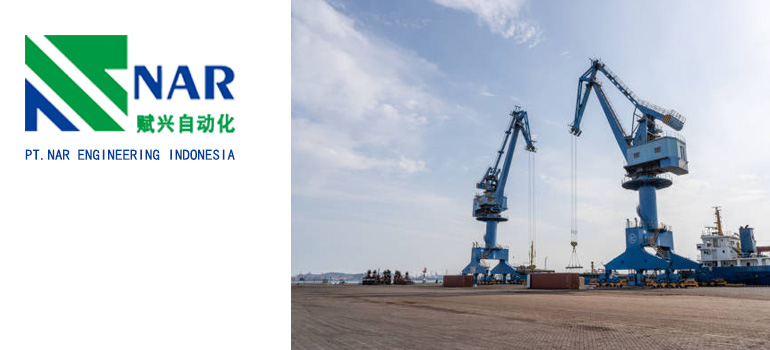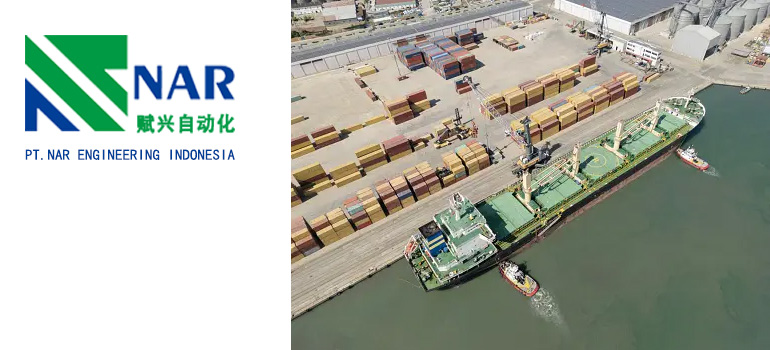Summary:
Streamlining Supply Chains: The Impact of Port Logistics Automation
Importance of Automation in Modern Ports
Key Technologies Driving Port Logistics Automation
Impact on Supply Chain Operations
In today’s fast-paced global trade environment, port logistics automation has become an important part of supply chain management. Imagine that when goods move rapidly around the world, ports must efficiently handle and transport these goods to meet the needs of consumers and businesses. Port logistics automation is not only a technological innovation, but also a strategic transformation that has changed our understanding of port operations.
In the past, port operations may have relied on a large amount of human resources and manual processes, which were often inefficient and prone to errors. However, with the advancement and innovation of technology, modern ports are gradually shifting towards automated systems to improve efficiency, reduce costs, and enhance sustainability. By adopting automated equipment, intelligent systems, and data-driven decision-making, ports can process goods more quickly, reduce congestion, and provide more reliable services.
This section will explore the definition, background, and impact of port logistics automation, laying the foundation for our in-depth exploration of this topic.
Importance of Automation in Modern Ports

Automation plays a pivotal role in modern ports, and its importance cannot be overstated. In today’s fast-paced global trade landscape, ports serve as crucial nodes in the supply chain, facilitating the movement of goods between different regions and countries. Here’s a closer look at why automation is essential in modern ports:
Enhanced Efficiency: Automation streamlines port operations by replacing manual tasks with automated processes. This leads to faster turnaround times for ships, quicker loading and unloading of cargo, and overall increased operational efficiency. With automation, ports can handle a higher volume of goods more effectively, contributing to smoother supply chain operations.
Improved Safety: Automation reduces the reliance on human labor for hazardous tasks, thereby enhancing safety in port environments. Automated equipment, such as cranes and transport vehicles, can perform tasks with precision and consistency, minimizing the risk of accidents and injuries. This prioritization of safety not only protects workers but also safeguards valuable assets and prevents costly disruptions to port operations.
Optimized Resource Utilization: Automation enables ports to optimize the utilization of resources, including manpower, equipment, and infrastructure. By deploying automation technologies such as predictive maintenance systems and real-time monitoring sensors, ports can better manage their assets, reduce downtime, and allocate resources more efficiently. This leads to cost savings and maximizes the return on investment in port infrastructure.
Enhanced Customer Experience: Automation contributes to a more seamless and reliable port experience for shipping companies, freight forwarders, and other stakeholders in the supply chain. Predictable turnaround times, reduced waiting periods, and efficient cargo handling translate to greater customer satisfaction and loyalty. Ports that embrace automation gain a competitive edge by offering superior services and attracting more business from global trade partners.
Environmental Sustainability: Automation can also play a significant role in promoting environmental sustainability in ports. By optimizing operations and reducing energy consumption, ports can minimize their carbon footprint and mitigate environmental impact. For example, automated systems can optimize vessel traffic to reduce emissions, while electrification of equipment can decrease reliance on fossil fuels. Embracing automation aligns with the growing emphasis on sustainability in the shipping and logistics industry, positioning ports as responsible stewards of the environment.
In summary, automation is indispensable for modern ports seeking to remain competitive, efficient, and sustainable in a rapidly evolving global trade landscape. By harnessing the power of automation, ports can achieve greater efficiency, safety, resource utilization, customer satisfaction, and environmental sustainability, ultimately driving growth and prosperity for all stakeholders in the supply chain.
Key Technologies Driving Port Logistics Automation
Several key technologies are driving the advancement of port logistics automation, revolutionizing how ports operate and enhancing their efficiency and productivity. Here are some of the most prominent technologies:
Automated Guided Vehicles (AGVs) and Automated Mobile Robots (AMRs): AGVs and AMRs are autonomous vehicles that navigate port terminals to transport containers, pallets, and other cargo. These vehicles use sensors, cameras, and advanced algorithms to navigate safely and efficiently, reducing the need for manual labor in tasks such as container movement and stacking.
Robotic Container Handling Systems: Robotic container handling systems, including automated stacking cranes and robotic arms, automate the process of loading and unloading containers from ships and stacking them in the terminal yard. These systems improve efficiency, reduce turnaround times for vessels, and optimize the use of terminal space.
Terminal Operating Systems (TOS): TOS are software platforms that manage and optimize various aspects of terminal operations, including vessel scheduling, cargo handling, and yard management. TOS integrate data from various sources, such as sensors, equipment, and shipping schedules, to optimize workflows, minimize delays, and improve overall terminal efficiency.
Internet of Things (IoT) Sensors: IoT sensors are deployed throughout port terminals to collect real-time data on equipment, cargo, and environmental conditions. These sensors monitor factors such as container location, temperature, humidity, and equipment performance, enabling proactive maintenance, optimizing resource allocation, and enhancing cargo tracking and security.
Artificial Intelligence (AI) and Machine Learning: AI and machine learning algorithms analyze vast amounts of data collected from port operations to identify patterns, predict equipment failures, optimize cargo handling processes, and improve overall terminal efficiency. These technologies enable predictive maintenance, dynamic scheduling, and data-driven decision-making to maximize productivity and minimize costs.
Blockchain Technology: Blockchain technology provides a secure and transparent platform for recording and tracking transactions and data exchanges in the supply chain. In port logistics, blockchain can enhance visibility, traceability, and security by creating an immutable record of cargo movements, documentation, and payments, reducing the risk of fraud, errors, and delays.
Drones and Unmanned Aerial Vehicles (UAVs): Drones and UAVs are used for aerial surveillance, inspection, and monitoring of port facilities, infrastructure, and cargo operations. These aerial platforms capture high-resolution imagery, collect data on port conditions, and perform safety inspections, enabling more efficient asset management, security enforcement, and emergency response.
By leveraging these advanced technologies, ports can automate and optimize their operations, streamline supply chain processes, and enhance their competitiveness in the global trade landscape. Implementing port logistics automation not only improves efficiency and productivity but also reduces costs, enhances safety and security, and contributes to environmental sustainability.
Impact on Supply Chain Operations
The impact of port logistics automation on supply chain operations is profound and far-reaching, influencing various aspects of the supply chain ecosystem. Here are some key impacts:
Efficiency and Productivity: Port logistics automation enhances the efficiency and productivity of supply chain operations by streamlining processes, reducing manual labor, and minimizing delays. Automated handling equipment, such as robotic cranes and conveyors, can load and unload cargo from ships and transport containers within the terminal more quickly and accurately than manual methods. This increased efficiency translates into faster turnaround times for vessels and shorter lead times for cargo, improving overall supply chain performance.
Inventory Management and Visibility: Automation in port operations improves inventory management and visibility throughout the supply chain. Real-time tracking and monitoring systems provide accurate information on the location and status of cargo, allowing supply chain stakeholders to track shipments, anticipate delivery times, and optimize inventory levels. This visibility enables better planning, reduces the risk of stockouts or overstocking, and enhances overall supply chain agility and responsiveness.
Cost Reduction: Port logistics automation helps reduce costs across the supply chain by minimizing labor expenses, optimizing resource utilization, and avoiding costly errors and delays. Automated equipment operates more efficiently than manual labor, leading to lower labor costs and increased throughput. Additionally, automation can optimize energy usage, reduce equipment downtime through predictive maintenance, and minimize the need for rework or corrective actions, resulting in overall cost savings for supply chain participants.
Supply Chain Resilience: Automation enhances supply chain resilience by reducing dependency on manual labor and mitigating risks associated with human error, labor shortages, and disruptions. Automated processes are more reliable and consistent than manual operations, reducing the likelihood of delays or disruptions caused by human factors. Furthermore, automation enables supply chain operations to continue smoothly in adverse conditions, such as inclement weather or emergencies, ensuring continuity and reliability in the face of challenges.
Data-Driven Decision-Making: Port logistics automation generates vast amounts of data on cargo movements, equipment performance, and operational efficiency. This data can be leveraged for data-driven decision-making across the supply chain, enabling stakeholders to identify trends, optimize processes, and make informed strategic decisions. Analytics and machine learning algorithms can analyze this data to identify opportunities for improvement, predict future demand, and optimize supply chain operations for greater efficiency and competitiveness.
Customer Service and Satisfaction: Automation in port logistics contributes to improved customer service and satisfaction by enhancing reliability, accuracy, and responsiveness in supply chain operations. Faster turnaround times, accurate delivery estimates, and seamless cargo handling improve the overall customer experience and build trust and loyalty among supply chain partners. Automated systems enable better communication and collaboration between stakeholders, leading to smoother coordination and execution of supply chain activities.
In summary, port logistics automation has a significant impact on supply chain operations, driving efficiency, visibility, cost reduction, resilience, data-driven decision-making, and customer satisfaction. By embracing automation, supply chain stakeholders can optimize their operations, mitigate risks, and gain a competitive edge in the dynamic and complex global marketplace.

